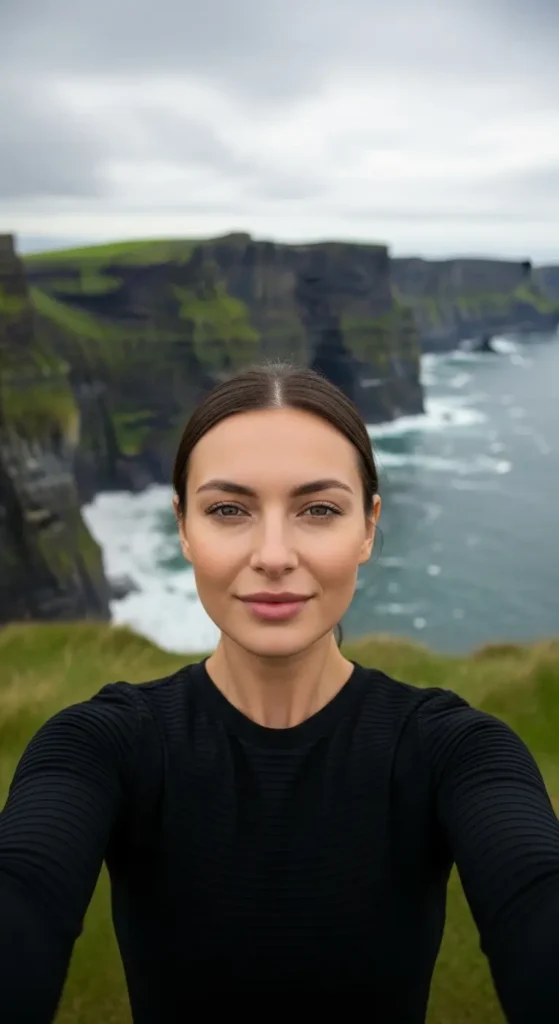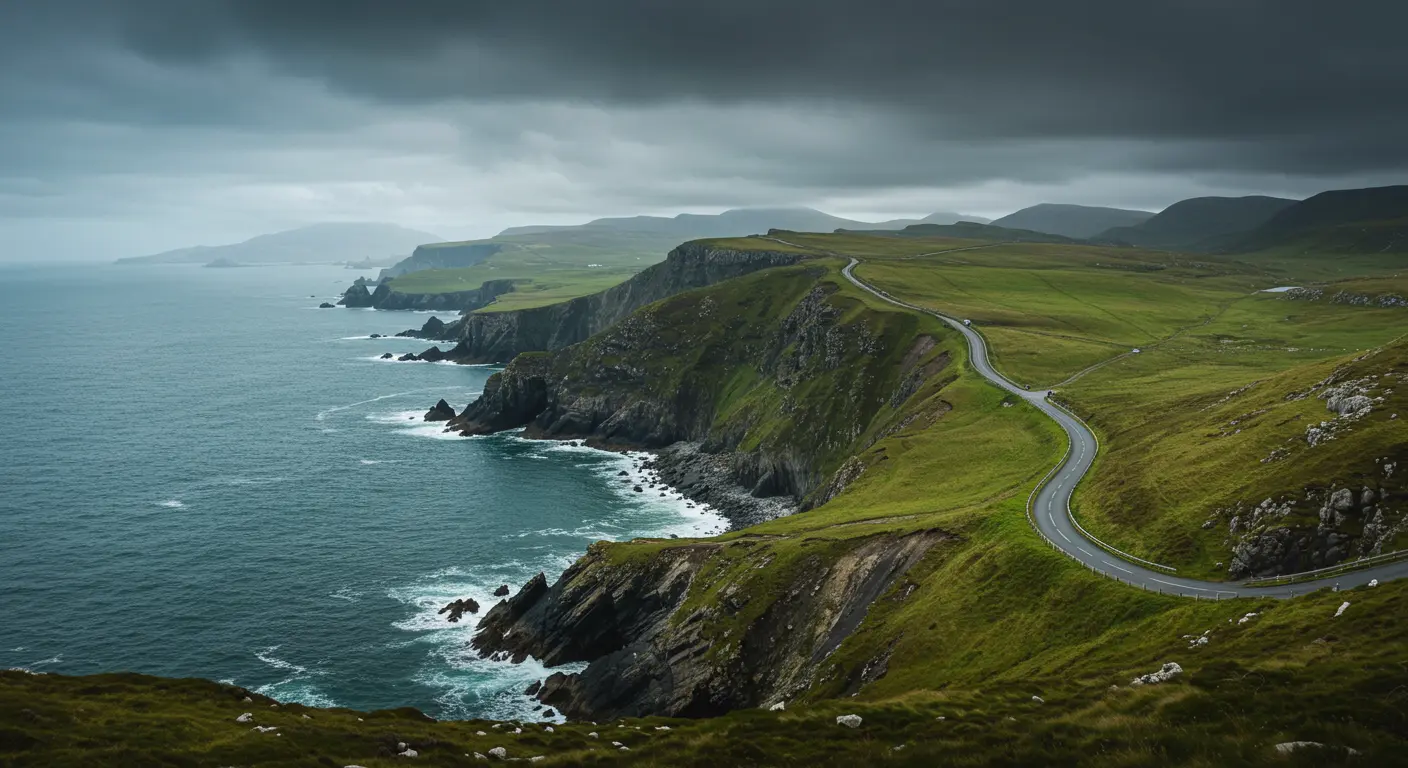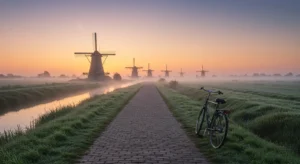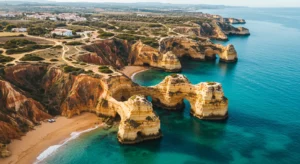Table of Contents
Your First Ireland Vacation: The Only Guide You’ll Ever Need
So, you’ve decided to take the plunge and finally book that trip to Ireland. First off, brilliant choice. You’ve probably been dreaming of emerald-green cliffs, cozy pubs with live music, and ancient castles shrouded in mist. But then you sit down to plan, and a million questions pop up.
Should you base yourself in Dublin and do day trips? Is it better to drive the famous Wild Atlantic Way? How do you even begin to fit everything in without spending your entire vacation in the car?
I get it. I’ve been there. The paradox of choice is real, and for a small island, Ireland packs a dizzying punch. But after countless trips, from getting blissfully lost on the Dingle Peninsula to finding solitude on forgotten beaches in Donegal, I’ve learned that the magic of Ireland isn’t in checking every box—it’s in the slow, spontaneous moments in between.
This guide is for you, the first-timer. We’re going to cut through the overwhelm and build the foundation for an Irish vacation you’ll be talking about for years. No fluff, just the good stuff.
Laying the Groundwork: When to Go & Your First Itinerary
Before you get lost in dreams of Guinness and Gaelic, let’s tackle the two biggest planning hurdles: timing and your route.
The Great Season Debate: When is the Best Time to Visit Ireland?
There’s no single “perfect” time—it all depends on what you’re after.
- Summer (June-August): This is peak season for a reason. You’ll get the warmest weather (think 60s and 70s Fahrenheit), the longest days with sunlight until nearly 11 PM, and a buzzing, vibrant atmosphere. The trade-off? The biggest crowds and the highest prices. If your heart is set on festivals and long, sunny evenings, this is your window.
- Shoulder Seasons (April-May & September-October): For my money, this is the sweet spot. The crowds have thinned, the prices are more reasonable, and the weather is often still quite mild. In spring, the countryside is explosively green; in autumn, you get golden light and a cozy, local feel. You might get a rain shower, but that’s Ireland—it’s part of the charm.
- Winter (November-March): Don’t write it off! A winter visit to Ireland is all about cozy pub sessions, dramatic storm-watching from a cliffside, and experiencing the culture without the tourists. The days are short, and it can be chilly, but the lower prices and raw, authentic atmosphere are a powerful draw.
Crafting Your First Irish Itinerary: Less is More
Trying to see the whole island in one go is the fastest way to turn a dream vacation into a stressful marathon. For a first trip of 7-10 days, I strongly recommend picking a region, not the entire country.
Option 1: The Classic South & West (The Most Popular First-Timer Route)
This route gives you a phenomenal taste of everything Ireland is famous for.
- Days 1-2: Dublin. Acclimatize, dive into history at Trinity College and the Book of Kells, and learn to pour the perfect pint at the Guinness Storehouse.
- Days 3-5: County Kerry. Take a train or drive to Killarney. Explore the stunning Ring of Kerry or the more intimate and, in my opinion, even more beautiful Dingle Peninsula. This is where you’ll find those postcard-perfect views.
- Days 6-7: Galway & Clare. Head north to the bohemian city of Galway for street music and craic (that’s fun!). Then, witness the raw power of the Cliffs of Moher and the otherworldly landscape of The Burren.
- Why it works: It’s a manageable loop that blends city, small towns, and breathtaking nature.
Option 2: The Wild Atlantic Way Sampler (For the Scenic Road Tripper)
If your soul craves wild landscapes and coastal drives, this is for you. Fly into Shannon Airport to start right in the action.
- Start in Clare: See the Cliffs of Moher from the less-crowded Hags Head and walk the limestone pavements of The Burren.
- Drive to Connemara: This region is pure, untamed beauty. Think of misty mountains, crystal-clear lakes, and a Gaelic-speaking heartland. Kylemore Abbey is a must-see.
- Finish in County Mayo: Walk the pilgrimage trail of Croagh Patrick, and drive to the very edge of Europe at the dramatic Slieve League Cliffs (some of the highest sea cliffs in Europe, and often quieter than Moher).
- Why it works: It’s a deeply immersive experience into Ireland’s wild west coast, perfect for those who want to get off the beaten track.
Beyond the Guidebook: Weaving in the Real Irish Experience
It’s the unplanned moments that truly define an Ireland vacation. Here’s how to find them.
The Magic of the Irish Pub (It’s Not What You Think)
A pub in Ireland isn’t just a bar; it’s the country’s living room. To experience it properly, you have to understand the craic (pronounced “crack”). It’s the art of good conversation, fun, and atmosphere.
Don’t just go for a drink. Go for a session of traditional music—but look for the real thing. You’ll know it’s a “trad session” when a group of musicians is gathered in a corner, playing fiddles, flutes, and bodhráns (Irish drums) purely for the love of it. It’s not a show for tourists; it’s a living, breathing tradition. The best sessions often happen in smaller towns and villages. Ask a friendly local where to find one. Trust me, sitting in a pub in Dingle or Kilkenny with a pint of the black stuff as music fills the room is an experience that will stay with you forever.
To Drive or Not to Drive?
This is a big one, especially for Americans.
Yes, you should drive. Public transport in Ireland is great for connecting cities, but to truly explore the hidden beaches, remote peninsulas, and charming villages, a car is freedom. Now, the elephant in the room: driving on the left.
It’s intimidating for about the first hour. Then, your brain adjusts. Rent a small car—the country roads are narrow. I mean, “take-a-deep-breath-and-pray-you-don’t-meet-a-tractor” narrow. It’s all part of the adventure. The key is to take your time, use the occasional “passing place” on single-lane roads, and remember that everyone else is in the same boat. The rewards—like having a pristine cove in Donegal all to yourself—are absolutely worth the initial nerves.
Keeping it Real: Practical Tips for a Smooth Trip
- Pack for “Four Seasons in One Day”: The Irish weather is famously changeable. The secret is layers. A waterproof and windproof jacket is non-negotiable, even in July. Pack a sweater, a t-shirt, and always have that raincoat handy.
- Embrace the Currency: Ireland uses the Euro. While credit cards are widely accepted, always have some cash on you for small pubs, farmer’s markets, and toll roads.
- Book Ahead: Especially if you’re traveling in summer, book your rental car and accommodation well in advance. The best B&Bs and smaller hotels fill up fast.
Your Ireland Vacation Questions, Answered (FAQs)
Q: Is Ireland really as expensive as people say?
A: It can be, but it doesn’t have to break the bank. Dublin is the most expensive city. To save money, focus on B&Bs or guesthouses over large hotels, eat pub lunches instead of fancy dinners every night, and remember that many of the best experiences (hiking, exploring ruins, and scenic drives) are free.
Q: I’m not a big drinker. Will I still enjoy the pub culture?
A: Absolutely! The pub is a social hub for everyone. You can order a tea, a soft drink, or a non-alcoholic beer and still be completely welcomed. The focus is on the conversation and the music, not just the alcohol.
Q: How many days are enough for a trip to Ireland?
A: For a first trip, 7-10 days is ideal. This gives you enough time to explore one or two regions at a relaxed pace without feeling rushed. Anything less than a week, and you’ll spend most of your time transiting.
Q: Is the food in Ireland any good?
A: Forget the old stereotypes. Ireland has undergone a culinary revolution. Yes, you can still get a great Irish stew, but you’ll also find incredible seafood chowder, grass-fed steaks, and artisanal cheese boards. The quality of local produce is exceptional.
Q: What’s the one thing I shouldn’t miss?
A: Beyond any specific sight, the one thing you must do is talk to the people. The Irish are famously friendly and witty. Strike up a conversation at a pub, ask your B&B host for recommendations, and chat with a local in a shop. That connection is the true heart of the country.
The Final Word: Your Irish Adventure Awaits
Planning your first Ireland vacation might seem daunting, but remember this: the goal isn’t to see everything. It’s to experience the essence of the place. It’s about the taste of a perfectly pulled pint, the sound of a fiddle in a crowded pub, the feeling of the Atlantic wind on your face as you stand on a cliff edge, and the warmth of a conversation with a stranger who feels like a friend.
Be flexible, leave room for the unexpected, and embrace the famous Irish saying: “Mol an óige agus tiocfaidh sí” – Praise the youth and they will flourish. Or, in traveler’s terms, embrace the journey, and it will reward you a thousand times over.
Now, what are you waiting for? Your Irish adventure is calling.
For the most up-to-date travel information and official resources, always check the Discover Ireland website, the country’s official tourism board.




